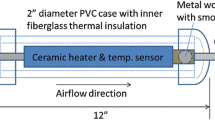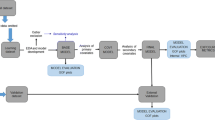Summary
The yield of a cigarette is determined by the tobacco blend, the length of the cigarette, the cigarette paper, the filter and air dilution. Cigarette yield has been defined by tradition and by law to be the yield of nicotine, tar and carbon monoxide obtained from a 35ml puff volume of 2-second duration taken every minute during the burning time of the cigarette.
Normally smokers draw a puff into their mouth and then inhale. Mouth delivery is largely determined by personal smoking behaviour. The puff volume, number of puffs taken per cigarette, and number of cigarettes smoked per day determine both the volume and the mass of daily mouth delivery. There are marked differences in smoking behaviour, and the delivery is substantially altered from the yield values obtained with the standardised test procedure. Body uptake of smoke ingredients is determined by smoke chemical parameters, smoker inhalation behaviour, lung morphology, and physiological parameters. The physiological parameters include tidal volume, vital capacity, rate of breathing, and rate of clearance for the lung.
Given these behavioural and physiological differences in individual delivery and uptake it is not surprising that differences in measured parameters occur within smokers of cigarettes with a particular yield. Biological differences among individuals, such as metabolic and size differences, cause additional variations in these values. Therefore, the estimates of nicotine and tar delivery can vary widely in studies of individual uptake when the estimates are based upon sample population data.
The variables in both smoking behaviour and in chemical and physiological factors which alter uptake make it essential to have a crossover design for any study. The large standard error for the plasma concentration of cotinine (a major metabolite of nicotine) within a sample population, and the log linear nature of the plasma cotinine concentration curve, requires a very large sample size for any study of cigarette delivery or uptake. When comparisons of brands are made, average values are misleading in that the skew to the high values obscures frequency differences among the lower values within the samples. It is important to remember that smoker compliance with study design is very essential. It would be impossible to know that individual smokers failed to remain on the prescribed regimen during a study that attempted to have smokers of higher yield brands switch to lower yield brands.
Epidemiology studies consistently find a higher incidence of both lung cancer and cardiovascular disease among smokers compared with non-smokers. There is evidence that the reduction in sales-weighted average tar yield of 30mg to 15mg has been accompanied by a decrease in the incidence of those diseases reported to be increased in the smoking population over non-smokers. Several studies have shown a dose-response relationship for the number of cigarettes smoked and lung cancer. The dose-response relationship for cardiovascular disease is less clear. A major part of the reduction in these disease states could be related to reduced numbers of smokers per 100,000 population. As cigarette yields decrease to tar values near 1rng, measurements of tar and nicotine uptake must be improved.
Similar content being viewed by others
References
Albert, R.E.; Peterson Jr, H.T.; Bohning, D.E. and Lippmann, M.: Short-term effects of cigarette smoking on bronchial clearance in humans. Archives of Environmental Health 30: 361–367 (1975).
Armitage, A.K.: Blood levels of nicotin, and cotinine achieved during smoking; in Enzell et al. (Eds) Nicotine Workshop Beitrage zur Tabakforschung 8: 288 (1976).
Armitage, A.K.; Dollery, C.T.; George, C.F.; Houseman, T.H.; Lewis, P.J. and Turner, D.M.: Absorptio, and metabolism of nicotine from cigarettes. British Medical Journal 4: 313–316 (1975).
Austin, E.; Brock, J. and Wissler, E.: A model for deposition of stabl, and unstable aerosols in the human respiratory tract. American Industrial Hygiene Association Journal 40: 1055–1066 (1979).
Benowitz, N.L.; Hall, S.M.; Herning, R.I.; Jacob, P. (III); Jones, R.T. and Osman, A.-L.: Smokers of low-yield cigarettes do not consume less nicotine. New England Journal of Medicine 309: 139–142 (1983a).
Benowitz, N.L.; Jacob, P. (III); Jones, R.T. and Rosenber, J.: Interindividual variability in the metabolis, and cardiovascular effects of nicotine in man. Journal of Pharmacolog, and Experimental Therapeutics 221: 368–372 (1982b).
Benowitz, N.S.; Kuyt, F. and Jacob, P. (III): Circadian blood nicotine concentrations during cigarette smoking. Clinical Pharmacolog, and Therapeutics 32: 758–764 (1982a).
Benowitz, N.L.; Kuyt, F.; Jacob, P. (III); Jones, R.T. and Osman, A.-L.: Cotinine dispositio, and effects. Clinical Pharmacolog, and Therapeutics 34: 604–611 (1983b).
Brain, J.D. and Valberg, P.A.: Deposition of aerosol in the respiratory tract. American Review of Respiratory Disease 120: 1325–1373 (1979).
Breimer, D.D.: Interindividual variations in drug disposition: Clinical implication, and methods of investigation. Clinical Pharmacokinetics 8: 371–377 (1983).
Cohen, A.J. and Roe, F.J.: Monograph on the pharmacolog, and toxicology of nicotine. Occasional Paper No. 4 (Tobacco Advisory Counci, London 1981).
Darby, T.D.: Pharmacologic considerations in the design of toxicology experiments. Clinical Toxicology 12: 229–238 (1978).
Doll, R. and Peto, R.: Cigarette smokin, and bronchial carcinoma: Dos, and time relationships among regular smoker, and lifelong non-smokers. American Journal of Epidemiolog, and Community Health 32: 303–313 (1978).
Garfinkel, L.: Changes in number of cigarettes smoked compared to changes in ta, and nicotine content over a 13-year period; in Gor, and Bock (Eds) A Safe Cigarette?, pp. 19–24 (Banbury Report (3), Cold Spring Harbor Laborator, Cold Spring Harbo, NY 1980).
Goldberg, I.S. and Smith, R.B.: Settlin, and diffusion of aerosol particles in small airways during breath holding. Annals of Biomedical Engineering 9: 557–575 (1981).
Goldstein, A.L. and Kapman, S.M.: Principles of drug action; the basis of pharmacology, 2nd ed. (J. Wile. and Son, New York 1974).
Gori, G.B. and Lynch, C.J.: Smoker intake from cigarettes in the 1-mg Federal Trade Commission tar class. Regular Toxicolog, and Pharmacology 3: 110–120 (1983).
Gorrod, J. W.: The excretio, and metabolism of nicotin, and some minor tobacco alkaloids in man. Beitrage zur Tabakforshung 8: 289–290 (1976).
Guerin, M.R.: Chemical composition of cigarette smoke; in Gori and Bock (Eds) A Safe Cigarette?, pp. 191–203 (Banbury Report (3), Cold Spring Harbor Laborator, Cold Spring Harbo, NY 1980).
Harris, J.E.: Cigarette smoking among successive birth cohorts of me, and women in the United States during 1900–80. Journal of the National Cancer Institute 71: 473–479 (1983).
Herning, R.I.; Jones, R.T.; Benowitz, N.L. and Mines, A.H.: How a cigarette is smoked determines blood nicotine levels. Clinical Pharmacolog, and Therapeutics 33: 84–90 (1983).
Hjern, L.: Cigarette smoke, ta, and nicotine levels in Sweden during the decade 1964–1975. Proceedings of the 3rd World Conference on Smokin, and Health: Modifying the Risk for the Smoker, pp.97–102 (DHEW Publication No. (NIH) 76-1221, 1976).
Hofacker, C.F.: Abuse of statistical packages: The case of the general linear model. American Journal of Physiology 245(Suppl. Regulatory Integrative Comp. Physiol. 14): R299–R302 (1983).
Holmberg, R.W.: Determination of particle size in tobacco smoke inhalation exposure devices using methylcyanoacrylate fixatio, and scanning microscopy; in Gueri, and Griffith (Eds) Tobacco Smoke Inhalation Bioassay Chemistry, pp. 103–118 (ORNL-5424, Oak Ridge National Laborator, Oak Ridg, Tennessee 1979).
Kannel, W.B.: Update on the role of cigarette smoking in coronary artery disease. American Heart Journal 101: 319–328 (1981).
Keith, C.H.: Experimenta, and theoretical aspects of cigarette smoke filtration; in Deitz (Ed.) Removal of Trace Contaminants from the Air, pp.79–90 (ACS Symposium Series No. 17, 1975).
Keith, C.H.: Physical methods for the modification of tobacco smoke; in Gor, and Bock (Eds) A Safe Cigarette?, pp.225–237 (Banbury Report (3), Cold Spring Harbor Laborator, Cold Spring Harbo, NY 1980).
Kramer, J.R.; Kitazume, H.; Proudfit, W.L.; Matsuda, Y.; Williams, G.W. and Sones Jr, F.M.: Progressio, and regression of coronary atherosclerosis: Relation to risk factors. American Heart Journal 105: 134–144 (1983).
Kunze, M. and Vutuc, C.: Threshold of tar exposure: Analysis of smoking history of male lung cancer case, and controls; in Gor, and Bock (Eds) A Safe Cigarette?, pp.29–34 (Banbury Report (3), Cold Spring Harbor Laborator, Cold Spring Harbo, NY 1980).
Lynch, G.J. and Gori, G.B.: Nondetectable risk levels in cigarette smoking; in Gor, and Bock (Eds) A Safe Cigarette?, pp.37–43 (Banbury Report (3), Cold Spring Harbor Laborator, Cold Spring Harbo, NY 1980).
McKennis Jr, H.: Experimental considerations of some alternate routes in the mammalian metabolism of nicotine. Beitrage zur Tabakforshung 8: 288–289 (1976).
Rowland, M. and Tozer, T.N.: Clinical Pharmacokinetics: Concept, and Applications (Le, and Febige, Philadelphia 1980).
Russell, M.A.H.; Sutton, S.R.; Iyer, R.; Feyerabend, C. and Vesey, C.J.: Long term switching to low tar low nicotine cigarettes. British Journal of Addiction 77: 145–158 (1982).
Schievelbein, H.: Absorption of nicotine under various conditions. Beitrage zur Tabakforshung 8: 286–287 (1976).
Schmeltz, I. (Ed.): Chemistry of Tobacc, and Tobacco Smoke (Plenum Pres, New York 1972).
Selke, W.A. and Mathews, J.H.: The permeability of cigarette paper, and cigarette ventilation. Beitrage zur Tabakforschung International 9: 193–200 (1978).
Surgeon General: Smokin, and Health: A report of the Surgeon General U.S. Department of Healt, Educatio, and Welfare Publication No. (PHS) 79-50066 (1979).
Tobin, M.J. and Sackner, M.A.: Monitoring smoking patterns of lo, and high tar cigarettes with inductive plethysmography. American Review of Respiratory Disease 126: 258–264 (1982).
Turner, D.M.: The use of a radiochemical method to study the metabolism of nicotine in experimental animals. Beitrage zur Tabakforschung 8: 291 (1976).
Vesell, E.S. and Penno, M.B.: Assessment of methods to identify sources of interindividual pharmacokinetic variations. Clinical Pharmacokinetics 8: 378–409 (1983).
Wald, N.; Doll, R. and Copeland, G.: Trends in tar, nicotine, and carbon monoxide yields of UK cigarettes manufactured since 1934. British Medical Journal 282: 763–765 (1981).
Wynder, E.L.: Some concepts of the less harmful cigarette; in Gor and Bock (Eds) A Safe Cigarette?, pp.3–12 (Banbury Report (3), Cold Spring Harbor Laborator, Cold Spring Harbo, NY 1980).
Wynder, E.L. and Hoffman, D.: Tobacc, and Tobacco Smoke (Academic Pres, New York 1967).
Yeh, H.C.; Phalen, R.F. and Raabe, O.G.: Factors influencing the deposition of inhaled particles. Environmental Health Perspectives 15: 147–156 (1976).
Yu, C.P.: A two component theory of aerosol deposition in lung airways. Bulletin of Mathematical Biology 40: 693–706 (1978).
Author information
Authors and Affiliations
Rights and permissions
About this article
Cite this article
Darby, T.D., McNamee, J.E. & van Rossum, J.M. Cigarette Smoking Pharmacokinetics and its Relationship to Smoking Behaviour. Clin Pharmacokinet 9, 435–449 (1984). https://doi.org/10.2165/00003088-198409050-00003
Published:
Issue Date:
DOI: https://doi.org/10.2165/00003088-198409050-00003




